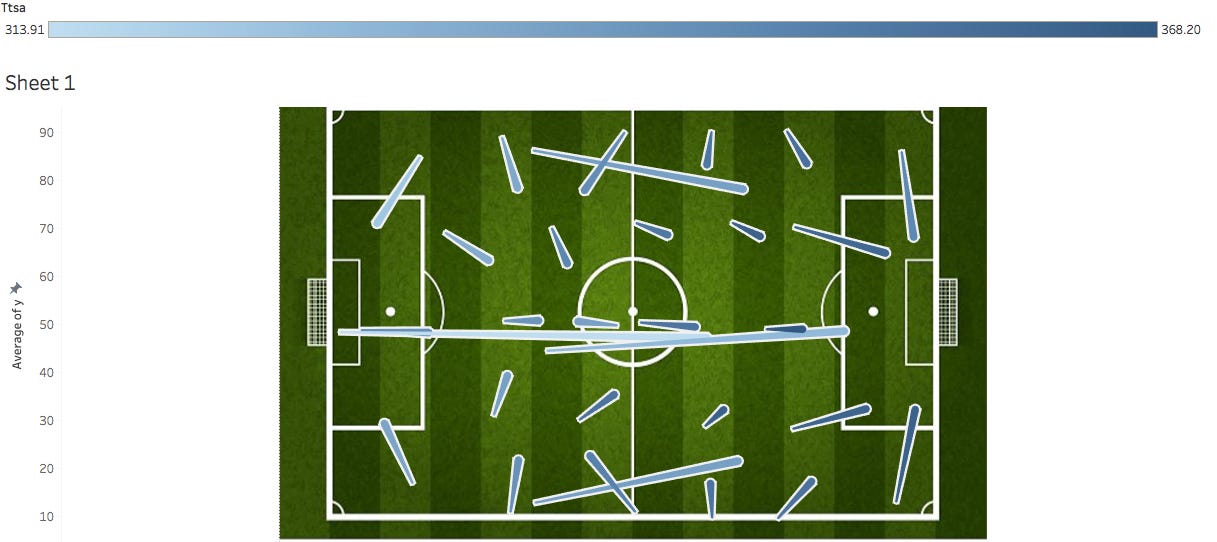Time to Shot Against By Passing Cluster at WC (plus TTS/TTSA
After this, of course I had to do the opposite. First here is time to shot against, so again this is the average time until the opposition takes a shot after the possessing team plays one of these types of passes. So you see unsurprisingly that passes in the opposition half lead to opposition shots less quick than long punts. This does not include goal kicks, all open play passes.

Now let's put the two together. So this is time to shot against minus time to shot for. So a negative number indicates that this type of pass actually leads quicker to an opposition shot than it does to your own shot.

Now the obvious question is: isn't it just bad teams are forced into these types of passes more often than good teams? Or maybe it's not even team quality, it's just game situation? Like those long punts come when your own goal is under siege already and the option to calmly play it out simply isn't there.
That is what we find when we look into the data by teams: of course bad teams hit it long more often. Panama hit it long 5.2x more often than the goalie played it short and forward (the pass type right under the long, orange boot above). Senegal played it long 4x as often, Iran 3x. On the other side: Germany, Brazil, Spain, and Australia played long balls from their own box less than 30% as often as the short pass.
And it's not just as simple as saying play a short pass either. Some teams who actually have a worse balance of time to shots for vs time to shots against when they played it short were Egypt, Iran, Iceland, Tunisia, Colombia, and Nigeria.
The other way around: teams who really benefited from playing a short pass first were England, Morocco, Belgium, Australia, Argentina, Senegal, and Uruguay.
I'm not sure if these specifics mean much really over such a short span, but Thom's work on these type metrics has long been something I wanted to sink my teeth into. It feels like there will be a lot more to come digging into this type of TTS data combined with different passing types, passing sequences, etc.


